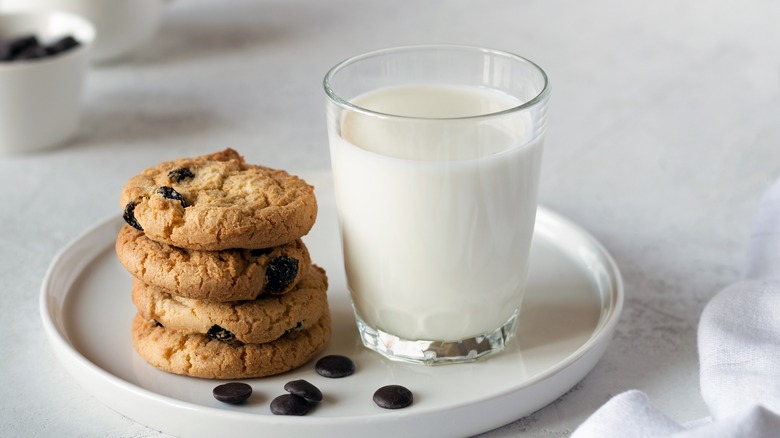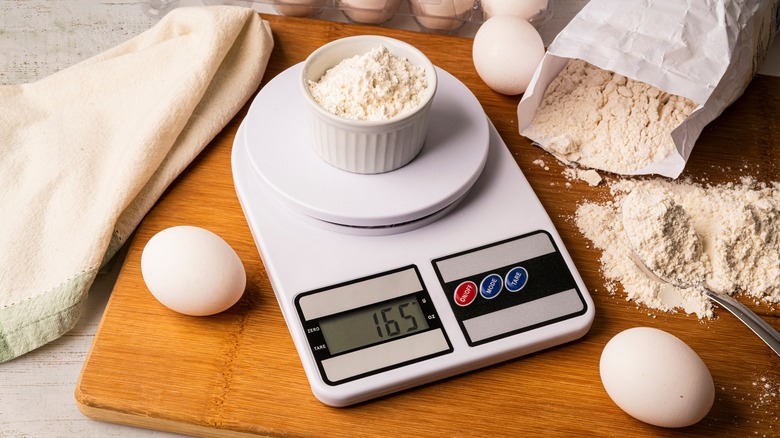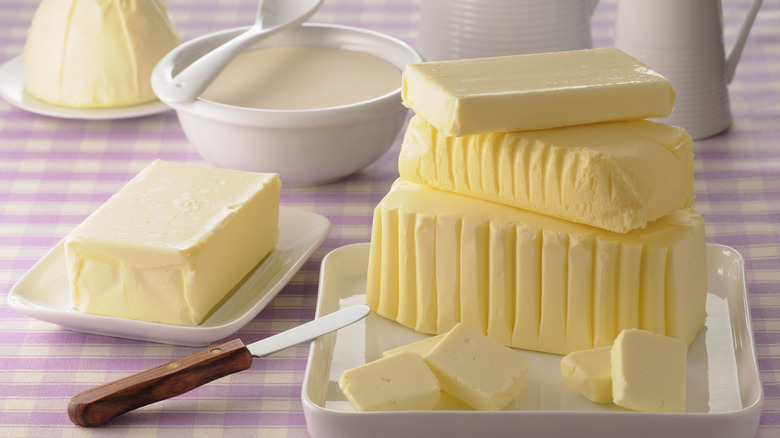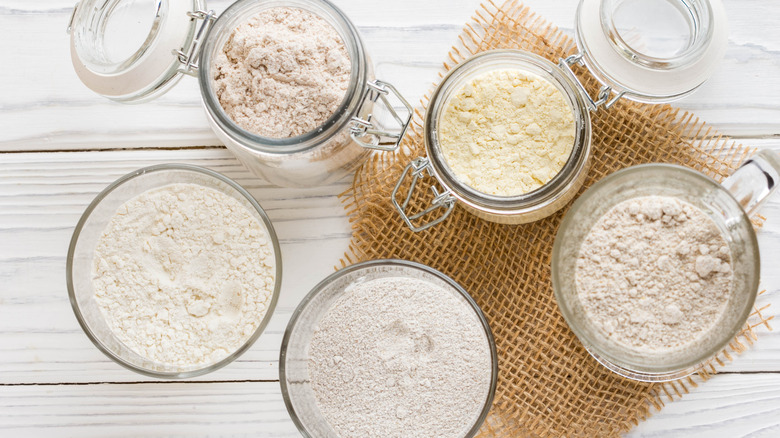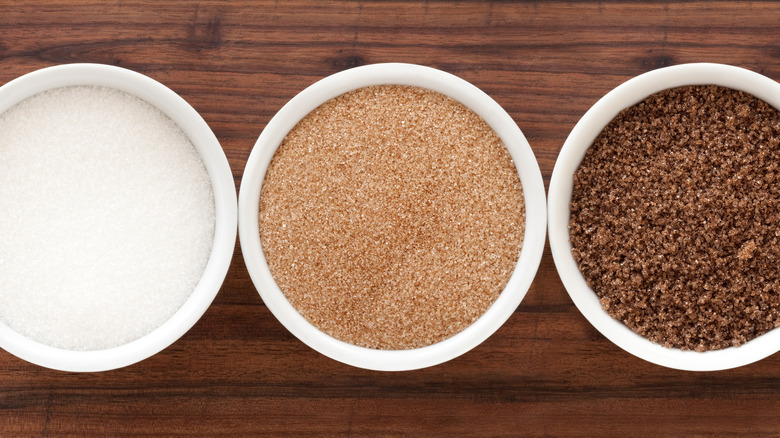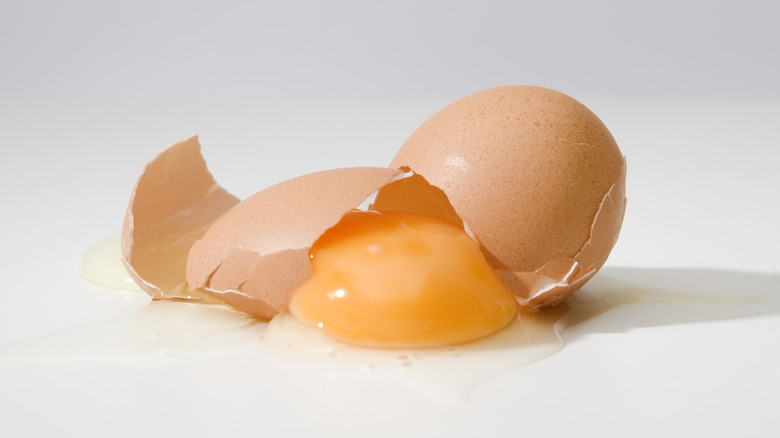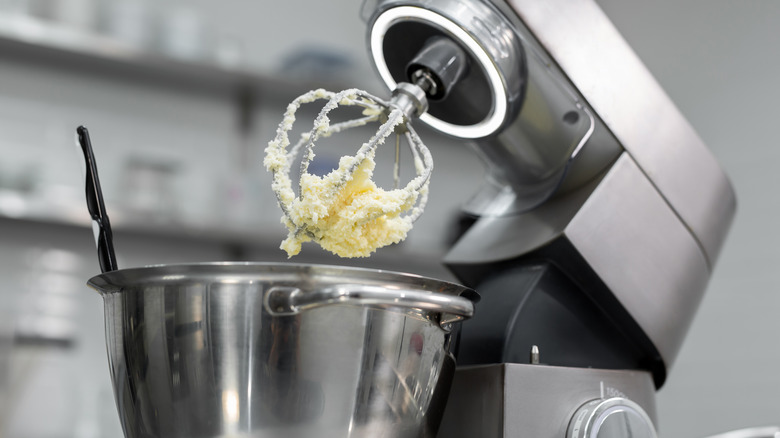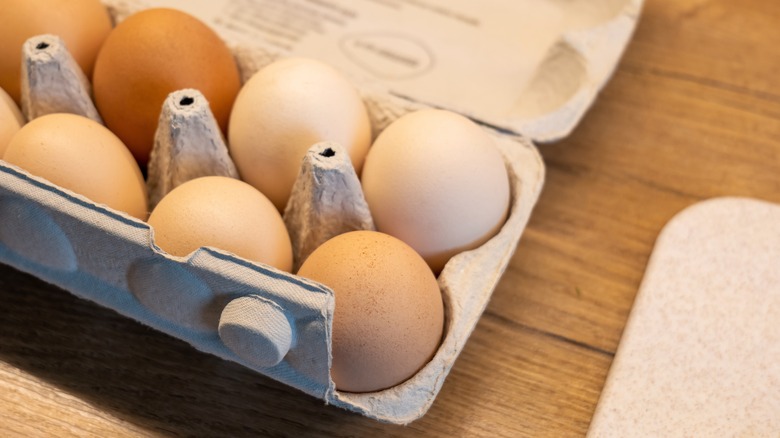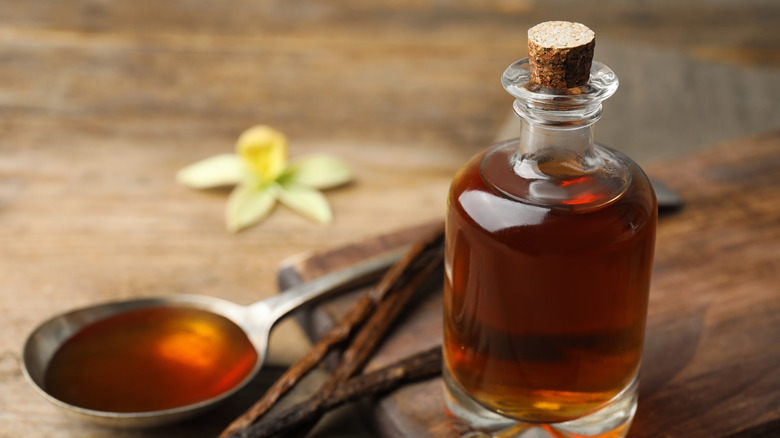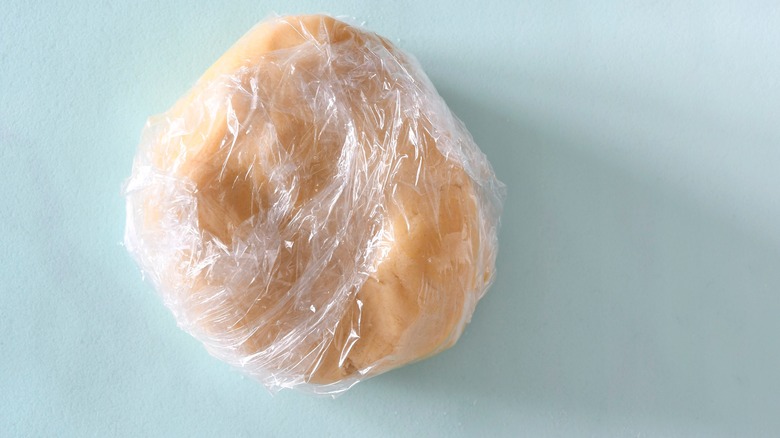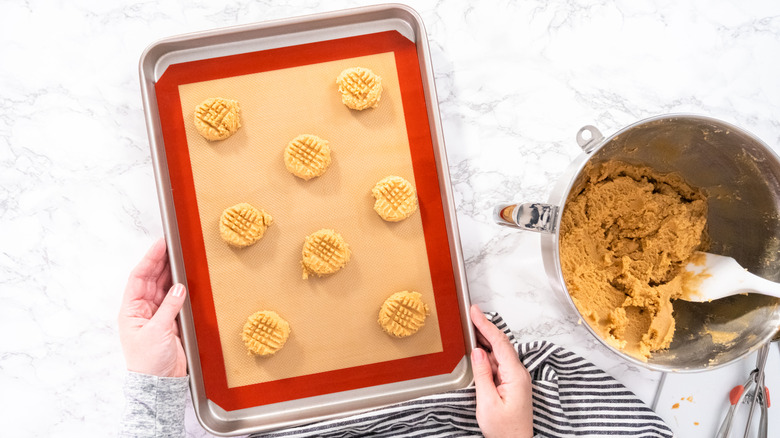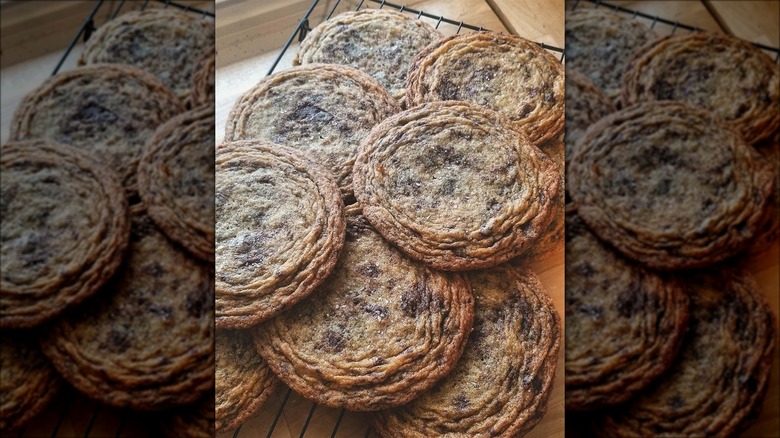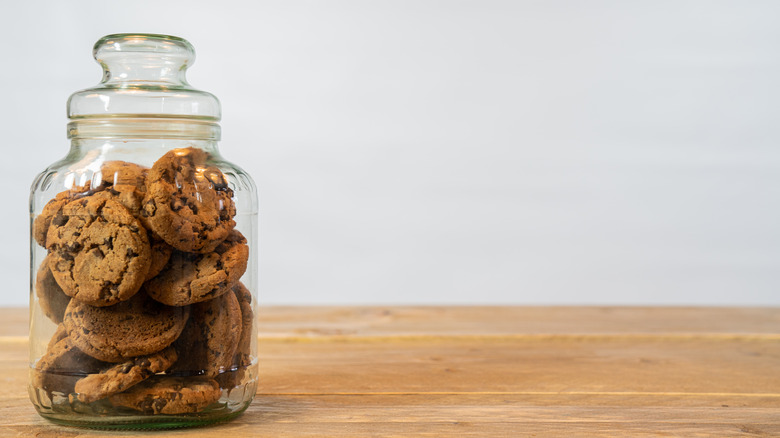Cookie Tips That Actually Make Sense
Baking cookies is one of the most wholesome and rewarding activities you can do. It's a creative outlet that allows you to learn and explore in a low-stakes, high-reward environment, far from the stresses of daily life. In fact, a 2016 study in the Journal of Positive Psychology found that such creative outlets have a beneficial effect on mental health, leaving people feeling relaxed and optimistic.
Cookies offer the perfect baking project. Quick to make and easier to master than bread or pastries, they are the ideal pastime when you want to spend some stress-free moments in the kitchen and reap the delicious benefits. One of the best parts about baking cookies is that there are countless variations and recipes you can try. You might have mastered chocolate chip cookies or crafted a signature recipe for gingerbread men, but there is always more to learn, and we're here to provide you with some tips that will actually have a meaningful impact. If you need inspiration for your next baking venture, we've got covered on that front, too. Check out our complete rundown of the absolute best cookie recipes for any occasion, and discover all the new ways you can stretch your cookie-baking muscles.
Weigh your dry ingredients instead of using measuring cups
If you're the kind of person who scrapes the top of your measuring cups with a knife to make the ingredients perfectly level, you probably think you've got the measuring thing down to a perfect science. But measuring cups are surprisingly imprecise. Most U.S. recipes call for cups, tablespoons, and teaspoons, but no matter how painstaking you are about filling them, there is still a problem with density. For example, if you measure a cup of sifted flour, it will be meaningfully lighter in weight than a compact cup of unsifted flour. Recipes rarely specify how compressed your dry ingredients should be, meaning that two bakers who use the exact same measurements by volume could end up with very different cookies. Even the same bakers can end up with different results if they make the recipe more than once.
Using a scale instead of measuring cups solves this inconsistency problem. No matter how densely you pack flour or baking powder onto a scale, the weight won't lie: 148 grams of compressed flour will take up less space than 148 grams of sifted flour, but they are the same measurement. You'll find differing opinions on how many grams equals a cup, but baking is all about ratios, and as long as you stick to the same conversion across your ingredients, your results will be uniform.
Opt for European-style butter
It's no secret that butter is one of the most important ingredients when it comes to flavor. It also helps create the moist, light texture of cake and the puffy, flaky rise of pastry. But not all butter is created equal. If you want to take your cookies to the next level, you should consider sinking an extra dollar or two into the European-style butter.
Butter is made by churning milk or cream until it separates. The solid components (milkfat) are then combined with water to create the golden blocks of heaven we purchase from the store. In both the United States and the European Union, products must be at least 80% milkfat to qualify as butter (as regulated by the U.S. Department of Agriculture and the European Union). Most U.S. manufacturers use the minimum fat content to make their products, but European-style butter is traditionally made with more than 82% milkfat. This slight upgrade makes all the difference, adding that creamy flavor and texture we all crave.
Before you rush to the store and look for the product with the highest fat content, however, it's worth noting that more doesn't always mean better. When you get to the 85% milkfat range, not only are the options more expensive, but the excess fat will weigh down your cookie dough, preventing the rise and texture you're looking for. The sweet spot is 82% or 83% milkfat.
Use a blend of flours
Flour provides structure and texture to baked goods. Starch and gluten conspire to absorb the liquid in the batter and puff, creating the tiny pockets of air that give cookies the perfect crunch and chewiness. But choosing the right flour for your recipe makes the difference between decent and best-ever cookies.
The variation lies in the levels of protein. Bread flour contains the highest amount at 12% to 14%, which is necessary for gluten-dependent bread. For cookies, however, it can create an overly chewy texture. All-purpose flour is 9% to 11% protein and offers chewiness without turning rubbery. It can be used in just about any recipe, from croissants to chocolate cake. For cookies, it produces respectable, predictable results, but nothing revelatory. Pastry flour is 8% to 9% protein, enough to create a strong, airy structure. Cake flour is light as a feather. With only 5% to 8% protein, it creates the most tender texture. It is also chlorinated to strip away even more protein.
Any of these flours will make serviceable (though very different) cookies on their own, but if you want to level up your baking, experiment with mixing them. If you love chewy cookies but don't want them tough, use a 50/50 ratio of bread flour and all-purpose flour. If you like more delicate cookies but don't want them to crumble before they reach your mouth, try a combination of all-purpose and cake flour.
Switch up your sugar
Sugar provides more than sweetness, and picking which type you use can add a whole other layer of complexity to your cookies. Head to the baking aisle at any grocery store, and you'll find a head-scratching array of options, from cane sugar to granulated to caster. And that doesn't even include the different types of brown sugar. Cane sugar, whether unrefined, raw, or refined, is made exclusively from sugarcane. Granulated sugar (or its more finely ground cousin, caster sugar) can be made from sugar beets or sugarcane. Both types are cited frequently in cookie recipes and vary only slightly in taste. Granulated sugar provides neutral sweetness, while cane sugar provides a slightly richer flavor.
The big difference, however, lies between brown sugar and granulated or cane sugar. Brown sugar is made of at least 95% sugar and bitter molasses, giving it more moisture and an intense, treacly flavor. It also contains more acid than white sugar, which can disrupt the chemistry of a recipe. While white sugar hampers gluten formation and therefore causes cookies to flatten and grow crunchy, brown sugar aids gluten formation, causing the cookies to remain dense and chewy. When making sugar cookies, it's best to stick to the light flavors of cane sugar or granulated sugar to ensure they are light and sweet. When making chocolate chip cookies, a proportion of brown sugar will add rich caramel notes to the chocolate and increase chewiness.
Add an extra egg yolk
Eggs play a vital and varied role in cookie recipes. Egg whites contain water and protein, while egg yolks contain fat and lecithin. Whether you're looking for aeration from the water content, texture and structure from the protein, richness from the fat, emulsification from the lecithin, or all of the above, eggs are a one-stop shop for elevating your cookie dough.
Most recipes call for whole eggs, but if you don't mind the slimy task of separating the yolk from the white, you can give your baking an easy upgrade. Yolks provide thickness and extra fat that inevitably translate to flavor, which is why they are the foundation of a good custard or rich ice cream. In baking, an extra egg yolk makes denser, more buttery cookies that are chewy rather than crunchy.
Don't leave egg whites out altogether, though. If the recipe calls for a whole egg, add a whole egg and an extra yolk rather than substituting two yolks for one egg. The texture and moisture that the white provides is key to balancing the richness of the yolk, and without it, your cookies will be flat and dry.
Whip the butter and sugar for at least five minutes
Sometimes, recipes can be frustratingly vague. The juice of one lemon, for example, could lead to very different results depending on the size of the lemon, while bake until browned and crispy could mean different things to different people. One such direction that is sadly common is to cream the butter and sugar until light and fluffy. For most of us, that means beating them until they turn lighter in color and gain a little volume, but who's to say when you've done enough? To the credit of recipe developers, whipping time depends on the mixer and the temperature of the butter. As a general rule, however, you should whip the butter and sugar for a minimum of five minutes.
If that comes as a surprise, you're in luck because your cookies are about to taste a lot better. Creaming these two foundational ingredients creates aeration for the rest of the dough. The longer you beat them, the more air is whipped in, and the more the cookies will puff up in the oven. Aside from helping cookies rise, it adds volume, giving you more cookies through the simple act of letting your mixer work its magic for a few extra minutes. It's hard to argue with bonus cookies.
Use room-temperature eggs
You might have noticed that cookie recipes often call for softened butter and room-temperature eggs. Anyone who's tried to cream a cold block of butter with sugar can attest to the importance of thawing it first, but bringing eggs to room temperature before starting a recipe can still seem like an unnecessary hassle. It's not like they won't mix into the dough if they're cold, right?
It turns out, they won't, at least not as well. When you put a cold egg straight into creamed butter and sugar, it cools the butter and starts to turn it solid again, losing some of the air that you've spent such a painstaking amount of time whipping into it. Cold eggs also take longer to separate and emulsify, which is why when you try to whisk together a cold egg with milk for scrambled eggs, you'll find that you still end up with stringy bits of egg white. Room-temperature eggs blend seamlessly with the butter and sugar, creating an easy emulsification with added air. If you're pressed for time, you can speed the warming process by placing a warm bowl over the cold eggs or letting them sit in a warm water bath.
Invest in pure vanilla extract
Vanilla is one of those ingredients, like cinnamon and rosewater, that can transform the flavor of your baking with less than a teaspoon. Unfortunately, however, it can be expensive. When you find yourself staring at options ranging from a few dollars to more than $20, you might question whether price corresponds to quality.
Instead of looking at the price, look at the label. You'll see that some products are labeled as "pure vanilla extract," while others say things like "vanilla flavoring" or "imitation vanilla flavor." Pure vanilla extract is made by soaking vanilla beans in alcohol to release the flavor. Because the orchid that produces the beans is laborious to cultivate, these products are more expensive and account for only 1% of vanilla extracts on the market.
Imitation vanilla is made with the chemical that gives real vanilla its flavor -– vanillin. It's manufactured in a lab and mixed with additives such as alcohol, propylene glycol, lignin (a wood pulp byproduct), and brown food coloring to more closely resemble its natural alternative. Both types of vanilla have the flavor you're looking for, but imitation vanilla can taste artificial, with notes of other ingredients that expand the taste profile, but not necessarily in a good way. If you're baking cookies that hinge on vanilla, such as sugar cookies, pure vanilla extract is worth every penny. It will give you the full, rich, fragrant flavor of vanilla beans rather than something that tastes astringent and artificial.
Do not skip refrigerating the dough
Making cookies is relatively easy compared to the steps involved in making a decorative cake or a perfectly laminated pastry. But one of the directions in cookie recipes you should never skip, no matter how rushed you are, is the prescribed refrigeration period. Chilling the dough not only makes it easier to work with, but also enhances the flavor. When you rest cookie dough in the refrigerator, the dry ingredients fully absorb the wet ingredients. This leads to more caramelization and a sturdier structure.
It also prevents the cookies from spreading as the fat solidifies when cooled. If you bake the dough right away, the fat simply runs off, creating flat, shapeless cookies. Some recipes call for as little as 30 minutes of refrigeration. But when it comes to chocolate chip cookies, 24 hours to 36 hours works wonders, producing a rich, toffee flavor and darker color that no amount of added chocolate or sea salt can make up for.
Use parchment paper or a silicone mat for baking
When you're baking a cake, greasing the tin is practically second nature. Trying to extricate a freshly baked cake from an ungreased pan is the kind of mistake you don't make twice, but the same logic does not apply to cookies. In fact, greasing your cookie sheets is the mistake you won't want to make twice. Leaving them ungreased –- or better yet, lining them with a silicone baking mat or parchment — is one of the best ways to achieve chewy, evenly baked cookies.
When you grease a cookie sheet, it removes the friction between the dough and the metal, making your cookies spread and become crispy, with burned, thin edges. Baking them on an ungreased pan is a better option, but a silicone mat will ensure that they neither spread too much nor stick to the pan. Parchment paper is a cheaper alternative to a silicone mat, but make sure it isn't advertised as non-stick, as that will have the same effect as greasing the pan.
Bang the pan
If you love thin chocolate chip cookies that practically melt on your tongue, stretch those biceps because you're going to need some muscle. Pan banging is a technique developed by cookbook author Sarah Kieffer, and we're happy to report that it's exactly what it sounds like. As your cookies are baking, remove them from the oven several times and bang them against your counter to make them deflate. It's a great way to let off steam (and become the villain of your apartment complex), but it also produces wafer-thin cookies with a rippled, crunchy surface and the perfect amount of chewiness.
To achieve these mouthwatering, camera-ready chocolate chip cookies, remove them from the oven after 10 minutes of baking when they've just started to puff up. Bang the pan against your stove top or baking rack until the cookies deflate (it doesn't have to be hard), then put them back in the oven. Repeat this step every two minutes. It sounds like a hassle, but it takes less than 20 minutes, and the results speak for themselves. If you can't get enough of the texture and look of these cookies, rest assured that the method works with other recipes, too, unless they're meant to be on the cakier side. Sugar cookies and snickerdoodles are a natural fit, while chocolate crinkle cookies and Mexican wedding cookies definitely aren't.
Be a stickler about storage
You've measured your ingredients with precision, mixed them for the prescribed intervals and in the proper order, refrigerated them to the perfect consistency, baked them to perfection, and eaten half of the cookies off the tray before they could cool. But what about the rest? If you leave them on the counter, they'll get stale; if you stack them in Tupperware, they'll become a gluey pile. If you store them properly, however, they'll stay crunchy for days and maybe even a week or more.
First thing's first: Let them cool completely. If you put cookies in a container while they're still warm, they'll release condensation and become stale in a matter of hours. Put the cooled cookies in an airtight container, and separate the layers with parchment paper to prevent them from sticking. Keep them in a cool part of your kitchen, such as the pantry, to avoid warming them and producing moisture. If you're making decorated cookies, wait to decorate them until you're about to eat them, as the moisture in icing can make them stale and soggy. If you want to go the extra mile with crunchy cookies, steal one of the silica packets from a box of crackers or bag of potato chips, and let it work its anti-staleness magic on your baking to ensure enduringly crunchy cookies — it's the least you deserve.
